AMETHYST

 Characteristics of the mineral.
Characteristics of the mineral.
A variety of quartz (silicon oxide), the color of which depends on the inclusion of different elements from lilac to dark violet. In bright sun, amethyst can gradually lose its color and become yellowish-gray, but repeated treatment with X-rays can restore and enhance its color. Its coloration is caused by the violation of the crystal lattice and the entry of ferric iron into it. Like rock crystal, it can take the form of crystals with 6 facets. Amethyst can be confused with fluorite, but fluorite is softer than amethyst, fluorite can be scratched with glass, and amethyst itself leaves a trace on the glass. In a multi-hour calcination at a temperature of about 500 ° C, it turns into citrine (a yellow version of quartz) and turns yellow-brown.
Amethyst quartz is a natural opaque amethyst crystal with a milky white substrate. Amethysts can also be stained with dyes to give them a more violet hue and remove local yellowness. Therefore, such amethyst must be thoroughly washed in soapy water.
Natural amethyst slightly changes its color depending on the lighting, temperature and angle of rotation of the stone. Therefore this stone was loved by seafarers and travelers. They believed that with very careful observation, it is possible to predict the weather by the shade of the stone: if the stone is slightly darkened, it will rain, but if it is bright, the weather will be clear.
Amethyst is a violet of varying intensity and sometimes with a pink or reddish hue a variety of quartz and is the most valuable in the quartz group. Amethyst is the favorite stone of the ministers of the church. They were adorned with icons, altars, pectoral crosses and panagias. Currently, amethyst is used as a material for cutting inserts for rings, earrings, beads, etc. Brushes of small crystals of amethyst, zheody and tonsils are used as a souvenir-ornamental stone.
Coloring in crystals is necessarily distributed unevenly: the pyramids of growth of the faces of the positive rhombohedron (the tips of the crystals) are colored purple-violet, the negative (the base of the crystal) - colorless or slightly violet, hexagonal prisms - colorless or smoky. This is due to the uneven population of the unit cell of quartz by the centers of the amethyst color and causes the phenomenon of anomalous pleochroism. In nature, amethyst occurs in the form of elongated and scepeter-like crystals, in twins and quadruples, druses, brushes, intergrowths and parallel-pentagonal aggregates. As a rule, the length of the crystals is from 5 to 100 mm. Sometimes there are quite large crystals.
Deposits of amethyst are associated with pegmatites, hydrothermal formations and placers. In the CIS, they are known in the Polar Urals, the Middle Urals, in Central Asia (Selbur, etc.), Yakutia (Cheating), in the north-east within the Omolon middle massif (Kedonskoye). Amethyst brushes are known in the unique Cape Ship on the coast of the Kandalaksha Gulf of the White Sea, in Armenia (Ijevan), Azerbaijan (Dashkesan), Eastern Siberia. Abroad, amethyst is produced in Brazil, Uruguay, India, Sri Lanka, the USA (Virginia, Arizona), Zimbabwe (Mwakambikó is one of the largest deposits in the world), Madagascar, Australia, etc.
Amethysts have an insidious property: their colors, deep and alive in the sunlight, fade visually and fade with electricity. Only some especially valuable amethysts have a juicy, more red shade. These are exclusively day stones, although they burn out in the light. The darkest and most beautiful amethysts appeared in the cracks that cut through granite massifs: brushes and druses of dense purple bipyramidal crystals grow in gaping slit-like voids, lining their walls. Amethysts are formed from low-temperature solutions. The upper part of the lava cloak is filled with crystallized bubbles of gases and vapors - agate and chalcedony tonsils. The midpoints of these tonsils - geodes - are covered with crystals of rock crystal and amethyst. In 1900, a giant cavity was uncovered in Brazil - a cave 10 m long and 5 m wide, all walls of which glittered from inside with large and dark crystals of amethyst.
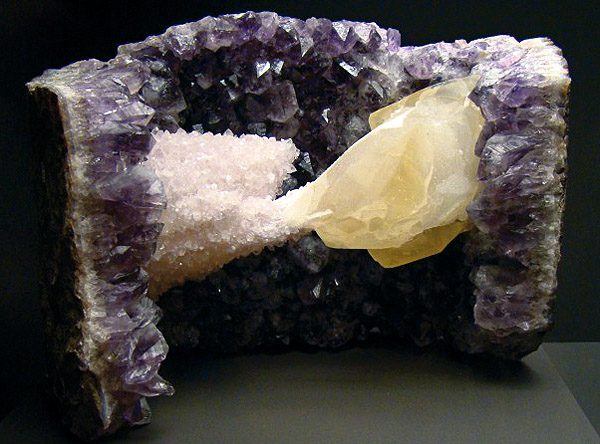
Amethyst (on the walls of geodes, on agate, fragment), calcite. Brazil. (2011).
Amethyst brushes are small crystals that are so tightly pressed together that only their sharp-angled heads stick out and the triangles of faces glint. Most often, such brushes occur where the thickness of rocks, say sandstones, is broken by a network of cracks. Solutions are dripping over these cracks. Leaching silica from the surrounding rocks, these hardly warm solutions precipitate in the cracks rock crystal and amethyst, covering the voids with a rug of pointed small crystals. Sometimes the area of brushes of amethyst reaches tens and hundreds square centimeters.
Synthetic amethysts are very pure, they can slightly change their color in daylight and artificial lighting (simulate alexandrite). Prices for amethysts, as well as for other jewelry stones, are very fickle. Quite low prices for amethysts at the present time can probably be explained by the large number of fine synthetic amethysts on the market that are practically not distinguishable by most gemological methods from natural ones. Prices for natural and synthetic amethysts are approximately the same today.
Magic properties of stones.
Amethyst has always been considered one of the most powerful talismans. Stone of spirituality. Stone from intoxication. In all ages, the amethyst was considered a powerful amulet from an evil destiny, and from a woman's heart the stone cast out an unrequited or old, persistent love, opening up new possibilities. In ancient times, amethysts made cups and bowls that protect themselves from intoxication, as well as from poisons. As a talisman, the stone attracts the mercy of rulers, makes a person alert, contributing to the growth of his discretion. If you cut amethyst images of the moon and the sun, you can get one of the strongest wards of witchcraft, black magic, spoilage, etc. Often amethyst, especially of dark tones, used as a talisman undefeated soldiers, he gave confidence and courage, guarded against Thoughtless actions and haste. In trade matters, the stone gave the owner luck, promoted profitable trade and protected his property.
It is a very beautiful, strong, versatile stone that was already known in ancient Egypt. The warning of Sumerian priests is known: amethyst is able to evoke love for the giver even if the person who received the gift before was in love with another. In Rome, the amethyst was called the "blessed stone", which brought good luck, peace and good, calmed the nerves and settled the quarrels. Rings with amethyst were worn by the first Christians, later amethysts shone on the hands of higher clerics. At the initiation of the cardinal's ordination, the initiate was awarded a ring with amethyst, why in the Catholic countries the stone was called episcopal, pastoral, and in Rus Bishop. In the Middle Ages it was called the "apostolic stone". Amethyst personifies sincerity and sincerity, security and tranquility, and according to the Eastern creeds - happiness, prosperity and optimism. The legend of the sobering effect of amethyst is explained simply: if you drink wine from an amethyst cup, you can not see how diluted it is with water.
Its name was given in honor of the beautiful nymph Ametis, to whom the god of wine and joy was blazing with sudden passion. But the beautiful nymph rejected his harassment. Loved the shepherd of Sirikos - a beautiful musician and favorite of Apollo. Offended Dionys pursued her through meadows and forests, and the nymph, running away, summoned the goddess Artemis to help. As soon as Dionysus tried to enclose the nymph in his arms, the goddess turned her into a gleaming purple shine stone, named after her with an amethyst.

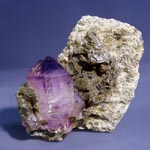
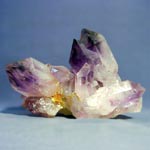
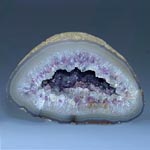
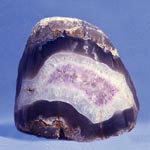

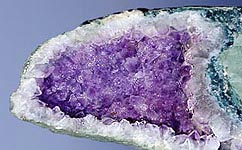
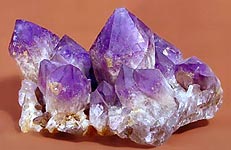

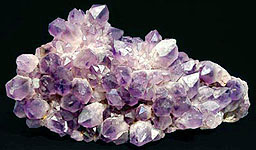
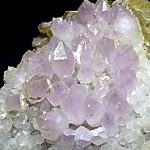
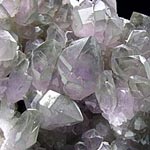
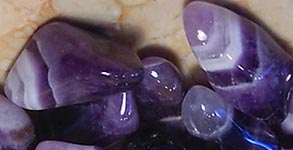
Poisonous and radioactive dangerous stones and minerals
** - poisonous stones and minerals (mandatory check in the chemical laboratory + explicit indication of toxicity).
** - radioactive stones and minerals (mandatory check on the standard dosimeter + ban on open sales in the case of radioactivity over 24 milli / g / h + additional measures of population protection).
All rare stones are subject to mandatory inspection at the standard dosimeter for the permissible level of radiation and in the chemical laboratory for the absence of poisonous and evaporating components that are dangerous to humans and the environment.


Comments
When commenting on, remember that the content and tone of your message can hurt the feelings of real people, show respect and tolerance to your interlocutors even if you do not share their opinion, your behavior in the conditions of freedom of expression and anonymity provided by the Internet, changes Not only virtual, but also the real world. All comments are hidden from the index, spam is controlled.